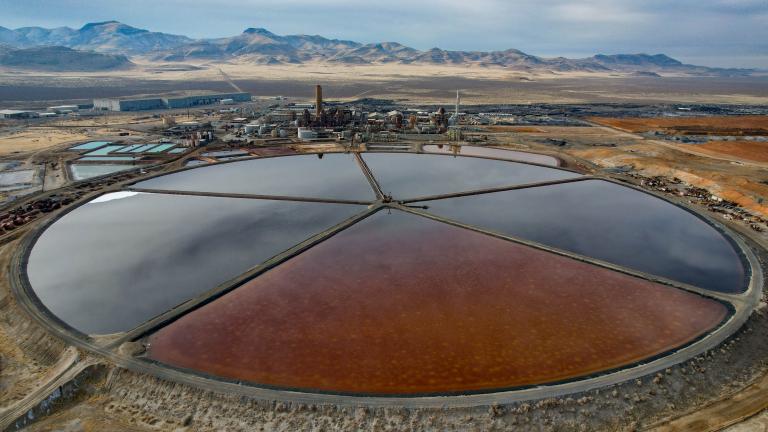The idea behind voluntary carbon offsets seems simple enough: Project developers undertake some kind of activity to either prevent carbon emissions or remove them from the atmosphere, like building a solar farm or planting trees. The project generates carbon credits, approved by a handful of unregulated carbon crediting programs and purchased by companies, governments, or individuals that want to offset some of their own emissions.
In reality, however, the market for these offsets is “riddled with fraud,” with offset projects too often failing to deliver their promised emission reductions. Common issues include nonpermanence, in which carbon removed from the atmosphere can’t be proven or expected to stay removed; nonadditionality, in which offsets don’t result in greater emission reductions than would have been expected without the offset project; and double-counting, in which the same offset is counted toward the emission reduction targets of two separate entities. Over the past couple of years, these problems have become so pervasive that they’re scaring buyers away: According to a BloombergNEF analysis, concerns around integrity and transparency were “the biggest reason” that demand for carbon credits contracted between 2021 and 2022, even as supply continued to grow.
To restore trust, many buyers, sellers, and brokers have looked to the Integrity Council for Voluntary Carbon Markets, or ICVCM, an independent, nongovernmental oversight body. In the absence of supervision from countries or intergovernmental bodies like the United Nations, the widely-respected ICVCM is the closest thing to a regulator that the industry for voluntary carbon credits has. Since last year, the ICVCM has been working on a set of guidelines to create a “definitive global threshold standard for high-quality carbon credits,” with rules on everything from permanence to monitoring and consultation with Indigenous peoples, plus specifications for different types of carbon credits. It finalized the last parts of the guidelines last week and invited carbon crediting programs to apply for special labels showing their credits are compliant with the new criteria.
Now that the rules are out, however, it’s not clear that they go far enough to address the industry’s pervasive reliability issues. While some carbon registries and brokers have applauded them for setting up additional safeguards against double-counting and requiring more documentation on how offset projects advance sustainable development, the voluntary carbon markets’ problems run very deep, and, according to some, require a greater overhaul. Carbon Market Watch, a European nonprofit, said the ICVCM’s guidelines “provide a set of much needed incremental improvements, but fail to raise the quality of carbon credits sufficiently and leave too much wiggle room to truly tackle the climate crisis.”
Permanence, or whether a carbon credit represents long-lasting carbon sequestration, is likely the most contentious issue, especially for carbon offset projects based on biological systems, such as forests, soil, wetlands, and oceans. These types of nature-based projects can be highly risky, since unforeseen natural disasters or human activity — a wildfire, for example, or illegal logging — can wipe out their carbon-sequestering capabilities. While the ICVCM recognizes that there is a “material risk of reversal” for these activities — meaning there’s a chance the carbon they lock up could be released — they’re still allowed in the new framework, as long as carbon-crediting programs agree to monitor them for at least 40 years. If any of the sequestered carbon does get released in that timeframe, the credit issuer has to cancel the original credits and issue new ones drawn from a “buffer reserve.”
Carbon Market Watch says that’s not enough. It objects to the very idea that parking carbon in nonpermanent sinks like forests can balance out carbon emitted from the combustion of fossil fuels. “There is no scientific equivalence between the two,” said Gilles Dufrasne, Carbon Market Watch’s lead on global carbon markets. While fossil fuel-based carbon emissions last in the atmosphere for centuries to millennia, that’s just not the case with most biological systems, which can unexpectedly go up in flames or be destroyed by disease. Even if you monitor a project for 40 years, a reversal could still occur in year 41 — or 401, for that matter.
“The logic of offsetting itself when it comes to nature-based solutions is inadequate,” Dufrasne added.
Given that nature-based solutions accounted for two-thirds of voluntary carbon markets’ transaction value in 2021, it would be a major change for the ICVCM to disallow them. Gabriel Labbate, a member of the core expert panel that advises other ICVCM committees on technical matters, acknowledged concerns about permanence but said the council’s new guidelines are just “a first step.”
“This is not the last thing the ICVCM will do in regard to the permanence of nature-based solution credits,” he told Grist, adding that future iterations of the organization’s guidelines could increase the monitoring requirement to 100 years. He said the council’s rules were “sufficiently stringent and their stringency will improve over time.”
Carbon Market Watch also takes issue with wording in the guidelines that makes it unclear what kind of offsetting activities will be eligible for the ICVCM stamp of approval. At least six times throughout its new documents, the ICVCM says participating carbon crediting programs can follow their own rules for demonstrating additionality or quantifying the emission reduction from a given type of carbon credit, so long as they submit an “explanation” stating why their approach is as good as the ICVCM’s.
This doesn’t necessarily create a loophole for bogus offsets, but it could open the door to abuse. When programs submit an explanation to the ICVCM, “you get into the black box on who’s deciding whether the explanation is satisfactory or not,” Dufrasne said. “You get out of the more objective framework, which is kind of what the whole exercise has been about.”
Andrew Howard, senior director of climate policy and strategy for Verra, the voluntary carbon markets’ largest issuer of carbon credits, resisted that characterization. He said the open-endedness in the ICVCM’s guidelines reflect the “complexity” of voluntary carbon markets. “There are many roads” to a high-quality carbon credit, Howard said, and “by not locking down prescriptive methods of how accrediting programs work, the ICVCM is allowing space for new innovation to occur.”
The ICVCM agreed. Daniel Ortega-Pacheco, director of the sustainability consulting company Biochar and a co-chair of the ICVCM’s expert panel, said flexibility could help the ICVCM “learn from current practices in the market.” The explanations will still be subject to scrutiny from an independent body of experts, he told Grist, and are not intended to be a “free pass” for carbon credit issuers.
Over the next several years, the ICVCM is planning further updates to its guidelines for voluntary carbon markets, as conditions change and as new science comes out on offsets and their efficacy. The next iteration is due in 2025. Dufrasne said the council’s rulemaking efforts have “potential,” although he’d like to see regulators — actual government agencies, with enforcement power — step in to boost transparency, prevent fraud, and protect consumers from misleading claims and advertising. That may be beginning to happen in the U.S., where the Commodity Futures Trading Commission, a federal regulator charged with ensuring the stability of the country’s derivatives markets, has recently demonstrated a heightened interest in fighting fraud in voluntary carbon markets.




